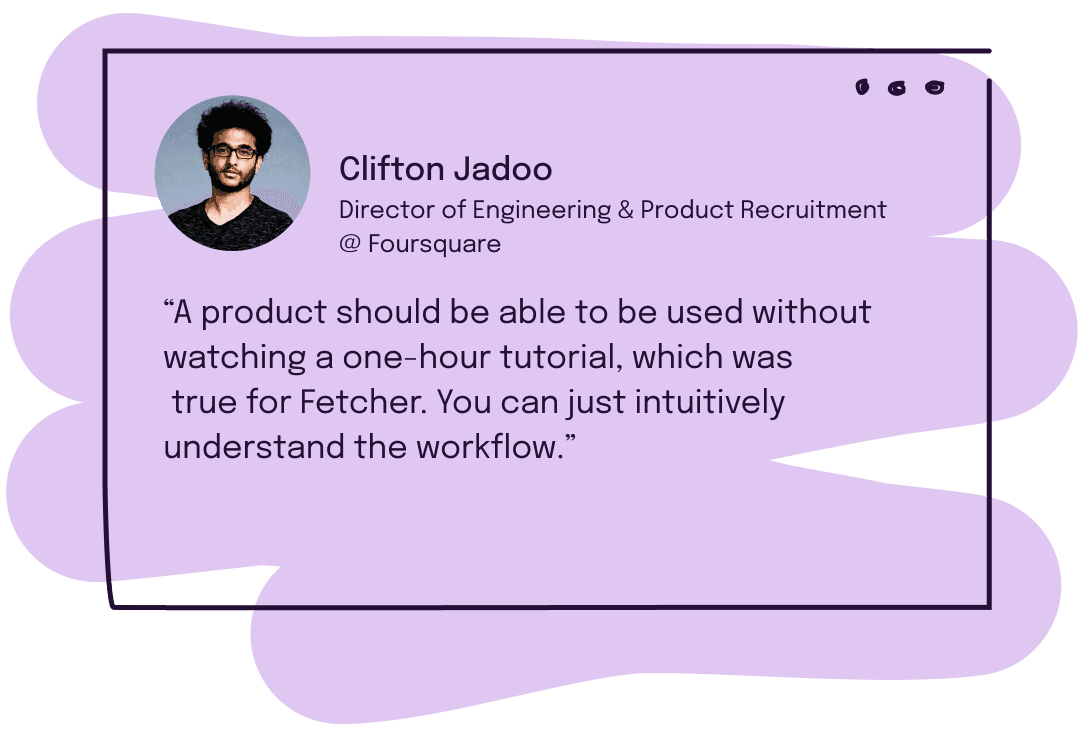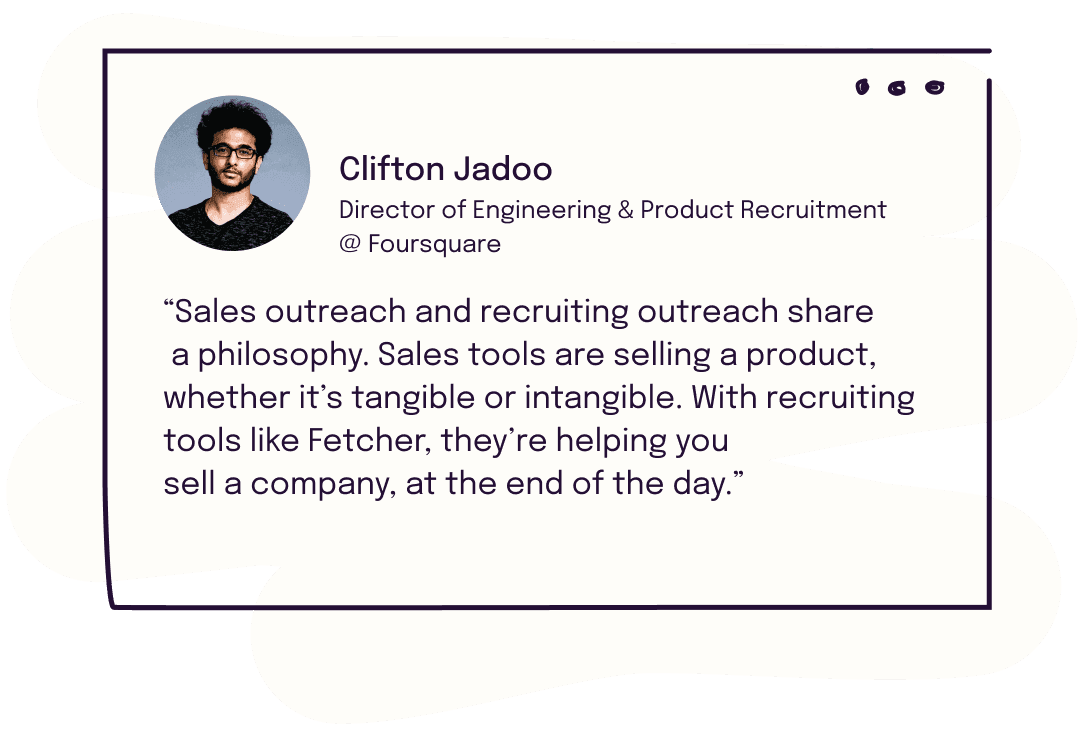Customer stories
Foursquare levels the recruiting playing field with Fetcher
Foursquare levels the recruiting playing field with Fetcher
Foursquare relies on Fetcher’s automated sourcing to reach candidates faster and expand brand awareness to help them level the playing field in today’s competitive talent market.

About
Foursquare is a location technology platform offering business solutions and consumer products through a deep understanding of location.
251-500
New York, NY
Software & IT
TL;DR: With the competition for tech talent at an all-time high, Fetcher enabled Foursquare to maximize its brand awareness and compete with much larger companies.
Introduction
The challenge
The solution
The result
Introduction
A familiar brand with a new direction
Many are familiar with Foursquare as a social check-in app. Still, today, it is the leading location data and technology company, providing products and services to leading brands like Apple, Airbnb, and many more.

The challenge
Keeping up with the talent titans
Foursquare competes with more well-known brands like Google and Spotify for talent. LinkedIn alone wasn’t providing enough opportunities to reach candidates, especially for hard-to-fill and senior roles.

Cliff Jadoo, Foursquare’s Director of Engineering & Product Recruitment, wanted to increase brand awareness and add more diverse candidates to his long-term pipeline. To do so, he realized a need to go beyond manually sourcing through LinkedIn Recruiter without adding hours to already busy days.
"When I email candidates, I sometimes get responses like, 'I had no idea that Foursquare did X, Y, and Z,'” said Cliff.
The solution
Taking a sales approach to top-of-funnel recruiting
Cliff was recommended to Fetcher by a colleague, and he was initially intrigued by Fetcher’s automated sourcing combined with humans-in-the-loop. Fetcher’s team of trained sourcers work with the platform’s algorithm to guide and verify his search results.
Diversifying the top-of-funnel was also a top priority, and Fetcher provides the ability to add multiple diversity variables within a search. Getting started with Fetcher in early 2021 was simple. “A product should be able to be used without watching a one-hour tutorial, which was true for Fetcher. You can intuitively understand the workflow,” added Cliff.

Now using Fetcher, Cliff quickly scans through the batches of candidates auto-sourced by Fetcher and provides feedback as a thumbs up or thumbs down. That means he can reach out faster to candidates he wants to talk to and get Foursquare in front of them sooner.
“Just being able to do that initial outreach, even if that candidate isn’t interested, they will at least have Foursquare in their mind,“ added Cliff.
The result
Increasing brand equity through faster sourcing and outreach
Cliff has a unique approach to measuring the ROI of Fetcher. Rather than looking at the number of offers made or accepted, increasing brand equity is a key indicator of success for him. Fetcher has allowed Cliff to multiply his sourcing efforts and increase diversity at the top of Foursquare’s funnel. That means more people are in Foursquare’s talent pipeline and can be strategically contacted through email, LinkedIn, and networking events.

Cliff has found that at least six to eight touchpoints are needed to convert a candidate. With the competition for tech talent at an all-time high, Fetcher is enabling Foursquare to maximize its brand awareness and compete with much larger companies.


